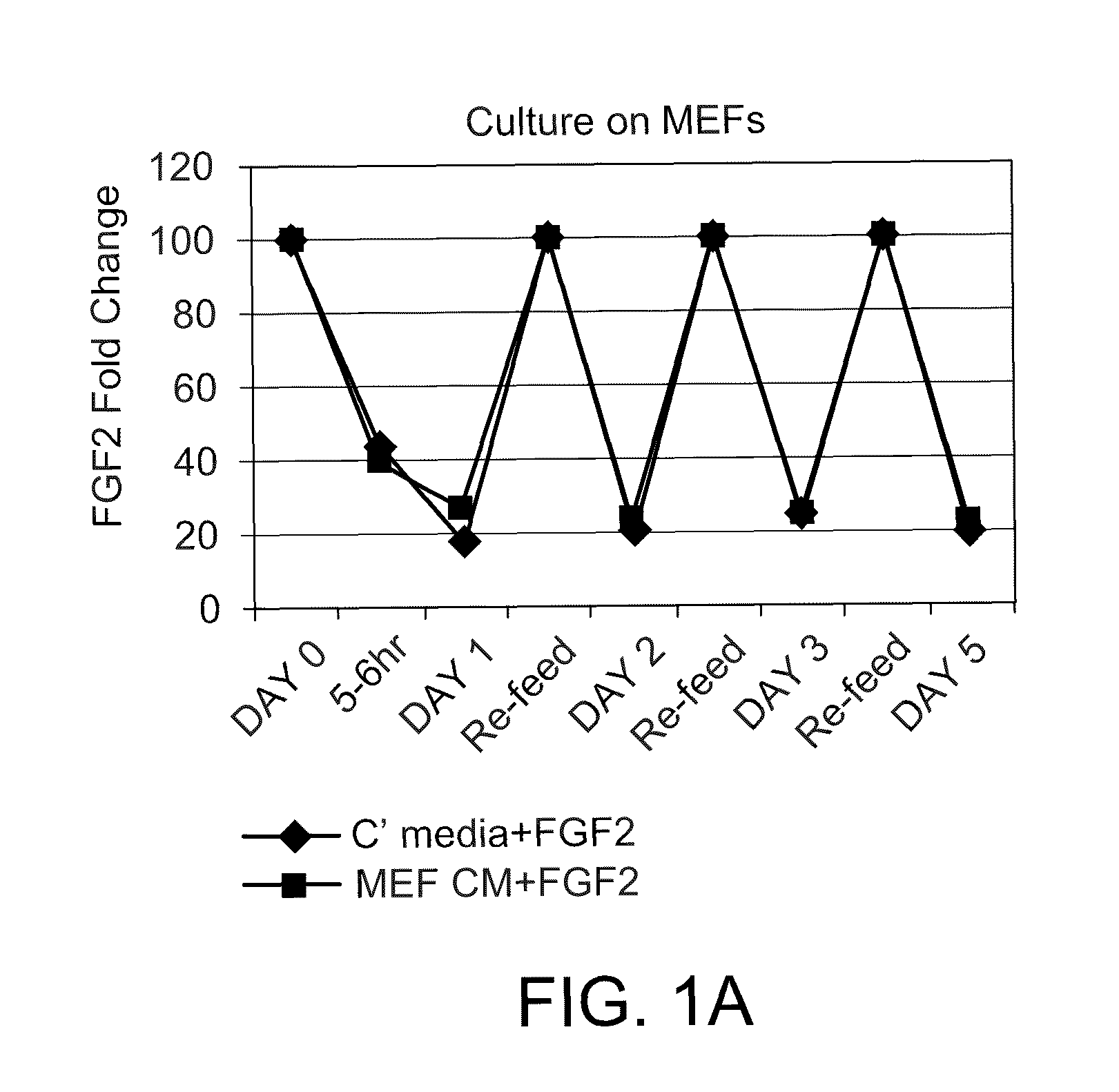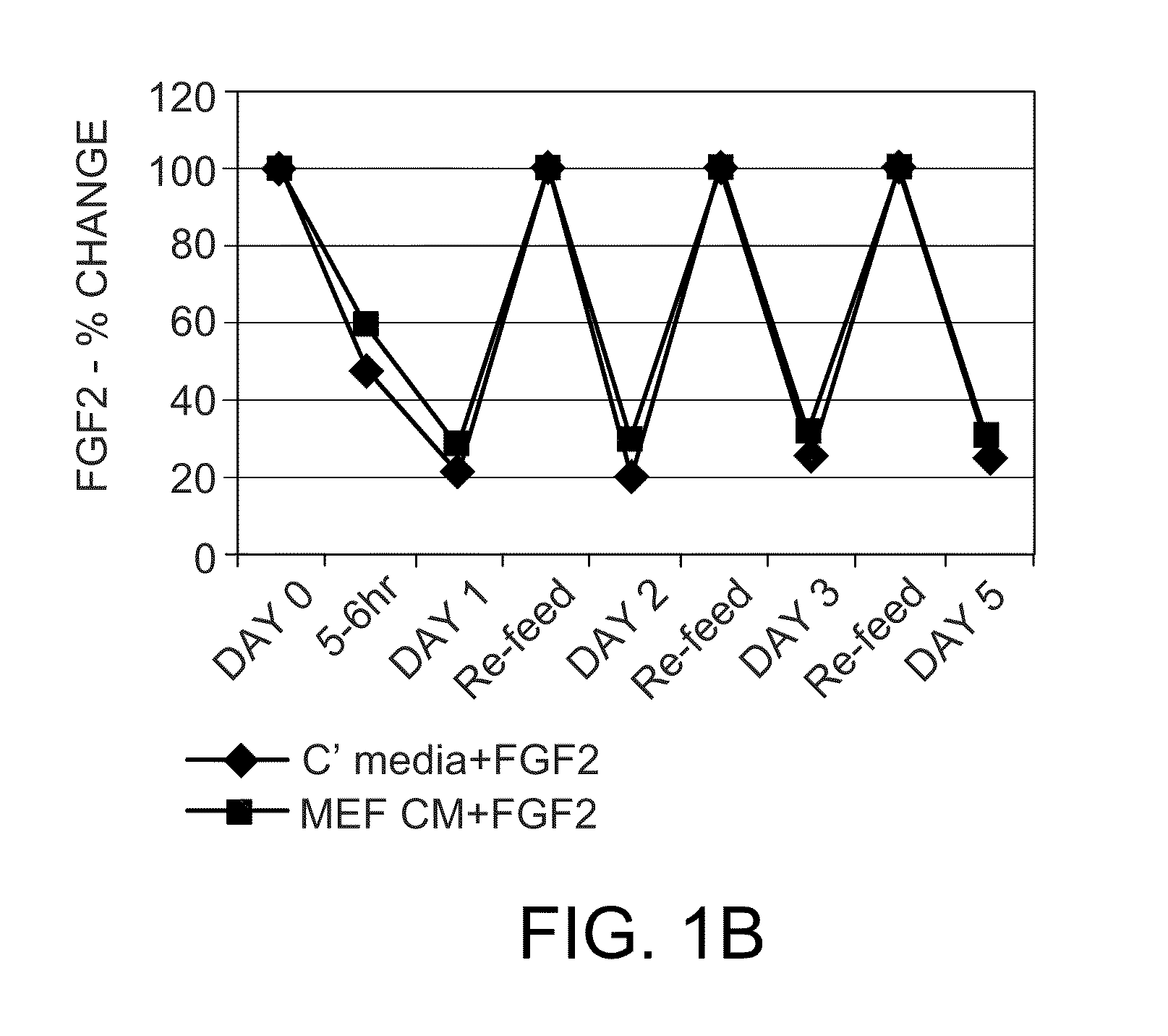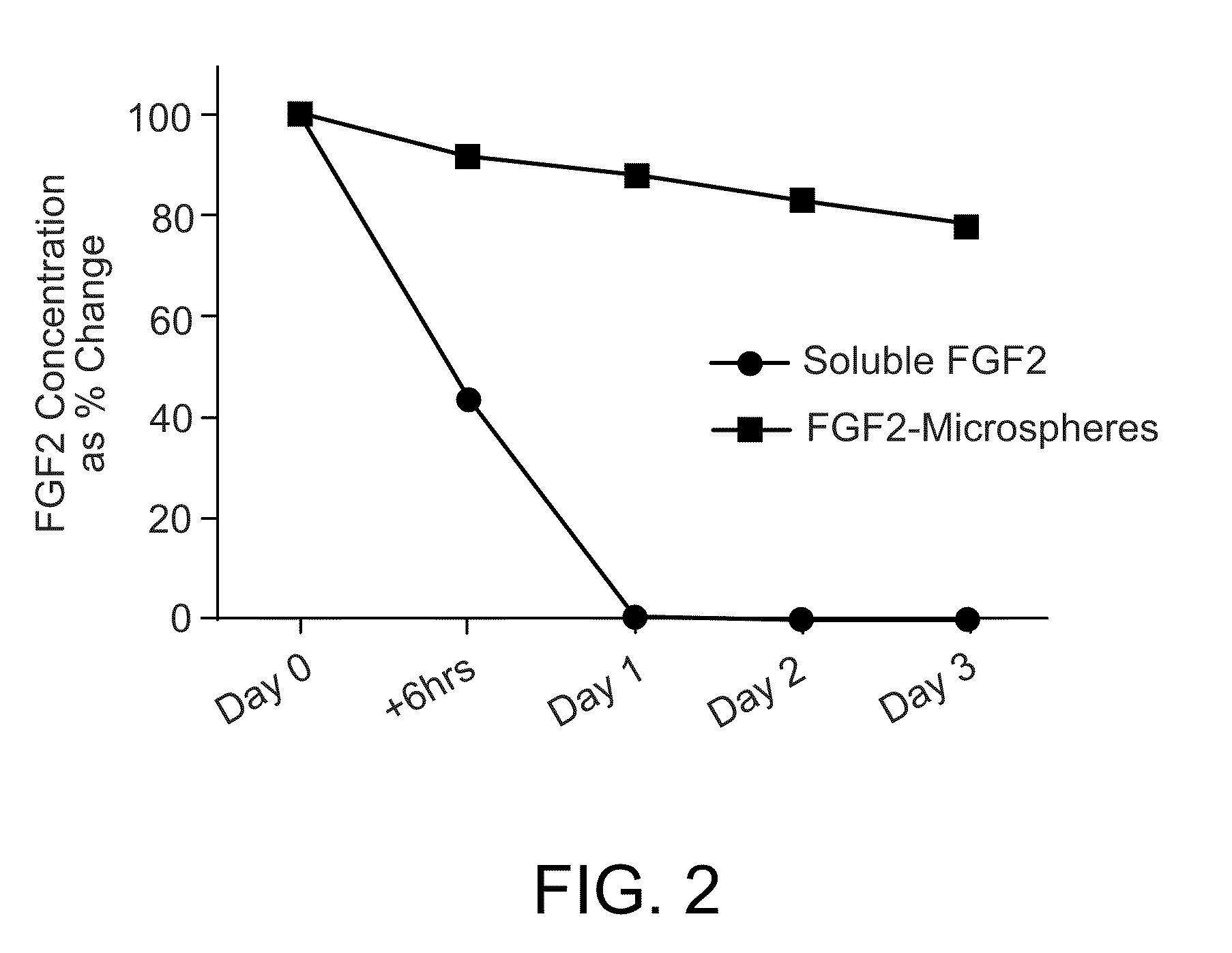Methods for culturing undifferentiated cells using sustained release compositions
a composition and cell technology, applied in the field of improved methods for culturing undifferentiated mammalian cells, can solve the problems of high rate of spontaneous differentiation of nscs cultured by these methods, and reducing the usefulness of stem cell culture, so as to reduce or eliminate the spontaneous differentiation of nscs, reduce the time, labor and expense
- Summary
- Abstract
- Description
- Claims
- Application Information
AI Technical Summary
Benefits of technology
Problems solved by technology
Method used
Image
Examples
example 1
FGF2 Fluctuation in Standard hESC Culture Conditions
[0107]This Example demonstrates that FGF2 concentrations fluctuate dramatically in standard hESC culture conditions.
[0108]WA-09 hESCs (WiCell Research Institute, National Stem Cell Bank, Madison, Wis.) were plated on tissue culture treated dishes or plates in standard mouse embryonic fibroblast (MEF) feeder (Global Stem Inc. (Rockville, Md.)) or non-MEF (Matrigel) (BD Biosciences, Bedford, Mass.) conditions in complete medium containing 10 ng / ml FGF2 or in MEF-conditioned medium (MEF CM) containing 10 ng / ml FGF2. Complete culture medium contained DMEM / F12 (Invitrogen, Carlsbad, Calif.), containing L-Glutamine (Invitrogen), Minimal Essential Amino Acids (Invitrogen), 20% Knockout Serum Replacement (Invitrogen), and 2-Mercaptoethanol (Invitrogen), and MEF CM was the same complete culture medium, but prior to use had been allowed to bathe MEFs for 24 hours.
[0109]The media was changed daily according to standard hESC culture technique ...
example 2
FGF2-Containing Microspheres Sustain FGF2 Levels in hESC Cultures
[0110]WA-09 hESCs (WiCell Research Institute,) were plated on Day −1 on standard MEF (Global Stem Inc.) on tissue culture treated culture dishes or plates in standard hESC media containing DMEM / F12 (Invitrogen, Carlsbad, Calif.), containing L-Glutamine (Invitrogen), Minimal Essential Amino Acids (Invitrogen), 20% Knockout Serum Replacement (Invitrogen), and 2-Mercaptoethanol (Invitrogen) and 10 ng / ml FGF2. Biodegradable PLGA microspheres were produced using 0.5% FGF2 (R&D® Systems), 3% Mg(OH)2, 1:1 weight ratio of heparin to FGF2 and 1 mM EDTA (“FGF2-microspheres”).
[0111]To measure FGF2 concentration in the hESC cultures over time, on Day 0, the culture media in the plated hESCs was changed and replaced with fresh complete media containing 10 ng / ml FGF2. Immediately after the media was replaced, a sample was collected in order to determine the concentration of FGF2 on Day 0 (the starting concentration). Just after the ...
example 3
Culture of hESCs With FGF2-Containing PLGA Microspheres
[0112]On Day −1, WA-09 hESCs were plated on standard mouse embryonic fibroblast (MEF) and non-MEF conditions as described in Example 1, above, in complete culture media containing DMEM / F12 (Invitrogen, Carlsbad, Calif.), containing L-Glutamine (Invitrogen), Minimal Essential Amino Acids (Invitrogen), 20% Knockout Serum Replacement (Invitrogen), 2-Mercaptoethanol (Invitrogen) and 10 ng / ml FGF2. The cell culture media was not changed for the 5-day duration of the experiment.
[0113]Biodegradable PLGA microspheres containing 0.5% soluble human FGF2 (R&D Systems), 3% Mg(OH)2, 1:1 weight ratio of heparin to FGF2 and 1 mM EDTA (“FGF2 microspheres”) or control microspheres containing 3% Mg(OH)2, 1:1 weight ratio of heparin to FGF2 and 1 mM EDTA, but not FGF2 (“empty microspheres”), were added to some of the cell cultures on Day 0 (24 hours after plating), following replacement of the culture media with complete hESC culture media supplem...
PUM
| Property | Measurement | Unit |
|---|---|---|
| concentration | aaaaa | aaaaa |
| concentration | aaaaa | aaaaa |
| time | aaaaa | aaaaa |
Abstract
Description
Claims
Application Information
 Login to View More
Login to View More - R&D
- Intellectual Property
- Life Sciences
- Materials
- Tech Scout
- Unparalleled Data Quality
- Higher Quality Content
- 60% Fewer Hallucinations
Browse by: Latest US Patents, China's latest patents, Technical Efficacy Thesaurus, Application Domain, Technology Topic, Popular Technical Reports.
© 2025 PatSnap. All rights reserved.Legal|Privacy policy|Modern Slavery Act Transparency Statement|Sitemap|About US| Contact US: help@patsnap.com



